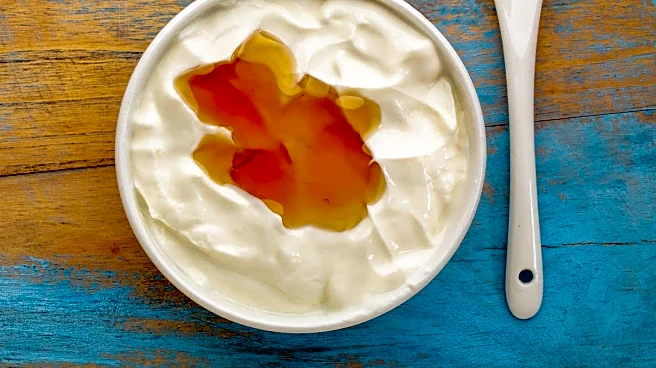What is the story about?
What's Happening?
Many individuals experience cravings for sweet treats after dinner, a phenomenon explored by nutritional experts. Anne VanBeber, PhD, RD, from Texas Christian University, highlights that cravings can be a learned response, often triggered by perceived deprivation when sugar intake is restricted. Environmental cues such as food advertisements and social media also play a significant role in sparking cravings. These cues activate physiological responses, including increased salivation and brain activity related to reward. Additionally, sugar activates the brain's reward system, releasing serotonin and dopamine, which are feel-good hormones. Blood sugar imbalances from carb-heavy meals can lead to cravings, as the body releases insulin, causing low blood sugar and subsequent sugar cravings. Sensory-specific satiety, where taste buds seek new flavors after consuming savory foods, also contributes to the desire for sweets. Research indicates that cravings peak at night due to the body's circadian rhythm and mental fatigue.
Why It's Important?
Understanding the reasons behind post-dinner sweet cravings is crucial for addressing dietary habits and promoting healthier eating patterns. These cravings can lead to increased sugar consumption, impacting overall health and contributing to conditions such as obesity and diabetes. By identifying the triggers, individuals can make informed choices to manage their cravings, such as incorporating balanced meals with protein, fiber, and healthy fats. This knowledge empowers people to reduce calorie intake and improve satiety, potentially leading to better weight management and reduced risk of chronic diseases. Furthermore, awareness of environmental cues can help individuals resist impulsive eating driven by advertisements and social media, fostering a more mindful approach to food consumption.
What's Next?
To combat post-dinner sweet cravings, experts suggest incorporating a variety of flavors in meals, including sour, bitter, salty, and umami, to reduce sensory-specific satiety. This approach can lead to consuming fewer calories and feeling fuller sooner. Additionally, choosing healthier alternatives like fruit or low-sugar desserts can satisfy cravings without excessive sugar intake. As research continues to explore the physiological and psychological aspects of cravings, nutritional guidelines may evolve to better address these issues. Public health campaigns could focus on educating individuals about the impact of environmental cues and promoting strategies for balanced eating.
Beyond the Headlines
The exploration of post-dinner sweet cravings touches on broader themes of dietary habits and mental health. The link between cravings and emotional eating highlights the importance of addressing stress and mood disorders in dietary interventions. Additionally, the role of circadian rhythms in cravings suggests potential intersections with sleep research, as sleep quality and timing may influence eating patterns. Understanding these connections could lead to holistic approaches in nutrition and mental health, emphasizing the interplay between physical and psychological well-being.
AI Generated Content
Do you find this article useful?














